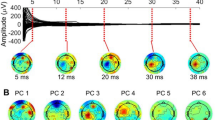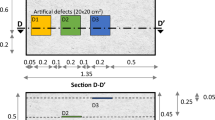Abstract
Several phenomena encountered in nature are characterized by very localized events occurring randomly at given times. Random pulses are an appropriate modelling tool for such events. Usually, the impulses are hidden in the noise due to unwanted convolution. In some cases, the problem is more complex because of the short time lag between the pulses. Considering these problems, the resulting signal is unclear and can lead to an erroneous analysis. Hence the need for deconvolution to restore the pulsed signal in order to obtain a more accurate diagnosis. The main objective of this study is to propose a new algorithm called orthogonal least absolute value. The particularity of this algorithm lies in its selection criterion. The algorithm iteratively selects the atom minimizing the absolute value of the approximation error. This allows the proposed algorithm to outperform classical greedy algorithms when the peaks are very close to each other. Numerical and experimental simulations are performed to study the proposed algorithm and compare its behavior to other greedy algorithms in deconvolution framework. Simulations results prove the performance of the proposed algorithm, especially when the impulses are very close to each other.









Similar content being viewed by others
Data Availability Statement
The generated data and the codes of the proposed work are available from the corresponding author on reasonable request.
References
P. Bentley, G. Nordehn, M. Coimbra, S. Mannor. The PASCAL classifying heart sounds challenge 2011 (CHSC2011) results. http://www.peterjbentley.com/heartchallenge/index.html
J. Bobin, J.L. Starck, Y. Moudden, M.J. Fadili. Blind source separation: the sparsity revolution. In Advances in Imaging and Electron Physics (Elsevier, 2008), pp. 221–302
S. Chen, S.A. Billings, W. Luo, Orthogonal least squares methods and their application to non-linear system identification. Int. J. Control 50(5), 1873 (1989)
S.S. Chen, D.L. Donoho, M.A. Saunders, Atomic decomposition by basis pursuit. SIAM Rev. 43(1), 129 (2001)
A. Choklati, K. Sabri, Cyclic analysis of extra heart sounds: Gauss kernel based model. Int. J. Image Graph. Signal Process. 10(5), 1 (2018)
C. Dossal, S. Mallat. Sparse spike deconvolution with minimum scale. In Signal Processing with Adaptive Sparse Structured Representations (SPARS workshop) (Citeseer, 2005), pp. 1–4
M. Ehler, Shrinkage rules for variational minimization problems and applications to analytical ultracentrifugation. J. Inverse Ill-Posed Probl. 19(4–5), 593 (2011)
R. Fernandes, H. Lopes, M. Gattass, Lobbes: an algorithm for sparse-spike deconvolution. IEEE Geosci. Remote Sens. Lett. 14(12), 2240 (2017)
R. Gribonval, M. Zibulevsky, in Handbook of Blind Source Separation (Elsevier, 2010), pp. 367–420
A. Had, K. Sabri, A two-stage blind deconvolution strategy for bearing fault vibration signals. Mech. Syst. Signal Process. 134(1), 106307 (2019)
A. Had, K. Sabri, M. Aoutoul, Detection of heart valves closure instants in phonocardiogram signals. Wirel. Pers. Commun. 112(3), 1569 (2020)
J. Idier, Bayesian Approach to Inverse Problems (Wiley, London, 2013)
N.B. Karahanoglu, H. Erdogan, Compressed sensing signal recovery via forward–backward pursuit. Digit. Signal Proc. 23(5), 1539 (2013)
A. Kazemipour, J. Liu, K. Solarana, D.A. Nagode, P.O. Kanold, M. Wu, B. Babadi, Fast and stable signal deconvolution via compressible state-space models. IEEE Trans. Biomed. Eng. 65(1), 74 (2018)
S. Kwon, J. Wang, B. Shim, Multipath matching pursuit. IEEE Trans. Inf. Theory 60(5), 2986 (2014)
C. Liu, D. Wang, T. Wang, F. Feng, Y. Wang, Multichannel sparse deconvolution of seismic data with Shearlet–Cauchy constrained inversion. J. Geophys. Eng. 14(5), 1275 (2017)
S. Mallat, Z. Zhang, Matching pursuits with time-frequency dictionaries. IEEE Trans. Signal Process. 41(12), 3397 (1993)
A.R. Maud, M.R. Bell. A mismatched greedy pursuit algorithm for sparse spike deconvolution. in 49th Asilomar Conference on Signals, Systems and Computers (IEEE, 2015), pp. 1477–1481
D. Needell, J. Tropp, CoSaMP: Iterative signal recovery from incomplete and inaccurate samples. Appl. Comput. Harmonic Anal. 26(3), 301 (2009)
S.L. Pan, K. Yan, H.Q. Lan, Z.Y. Qin, A Bregman adaptive sparse-spike deconvolution method in the frequency domain. Appl. Geophys. 16(4), 463 (2019)
Y. Pati, R. Rezaiifar, P. Krishnaprasad. Orthogonal matching pursuit: recursive function approximation with applications to wavelet decomposition. in Proceedings of 27th Asilomar Conference on Signals, Systems and Computers (IEEE Comput. Soc. Press, 1993), pp. 40–44
B. Rao, K. Kreutz-Delgado, An affine scaling methodology for best basis selection. IEEE Trans. Signal Process. 47(1), 187 (1999)
K. Sabri, New cyclic sparsity measures for deconvolution based on convex relaxation. Circuits Syst. Signal Process. 34(9), 2911 (2015)
R. Tibshirani. Regression shrinkage and selection via the lasso. J. R. Stat. Soc. Ser. B (Methodol.) 58(1), 267 (1996)
J. Tropp, Greed is good: algorithmic results for sparse approximation. IEEE Trans. Inf. Theory 50(10), 2231 (2004)
F. Wang, J. Zhang, G. Sun, T. Geng, Iterative forward-backward pursuit algorithm for compressed sensing. J. Electr. Comput. Eng. 2016(1), 1 (2016)
L. Wang, Q. Zhao, J. Gao, Z. Xu, M. Fehler, X. Jiang, Seismic sparse-spike deconvolution via toeplitz-sparse matrix factorization. Geophysics 81(3), 169 (2016)
Author information
Authors and Affiliations
Corresponding author
Additional information
Publisher's Note
Springer Nature remains neutral with regard to jurisdictional claims in published maps and institutional affiliations.
Rights and permissions
About this article
Cite this article
Had, A., Sabri, K. Orthogonal Least Absolute Value for Sparse Spike Deconvolution. Circuits Syst Signal Process 40, 1948–1961 (2021). https://doi.org/10.1007/s00034-021-01667-z
Received:
Revised:
Accepted:
Published:
Issue Date:
DOI: https://doi.org/10.1007/s00034-021-01667-z




